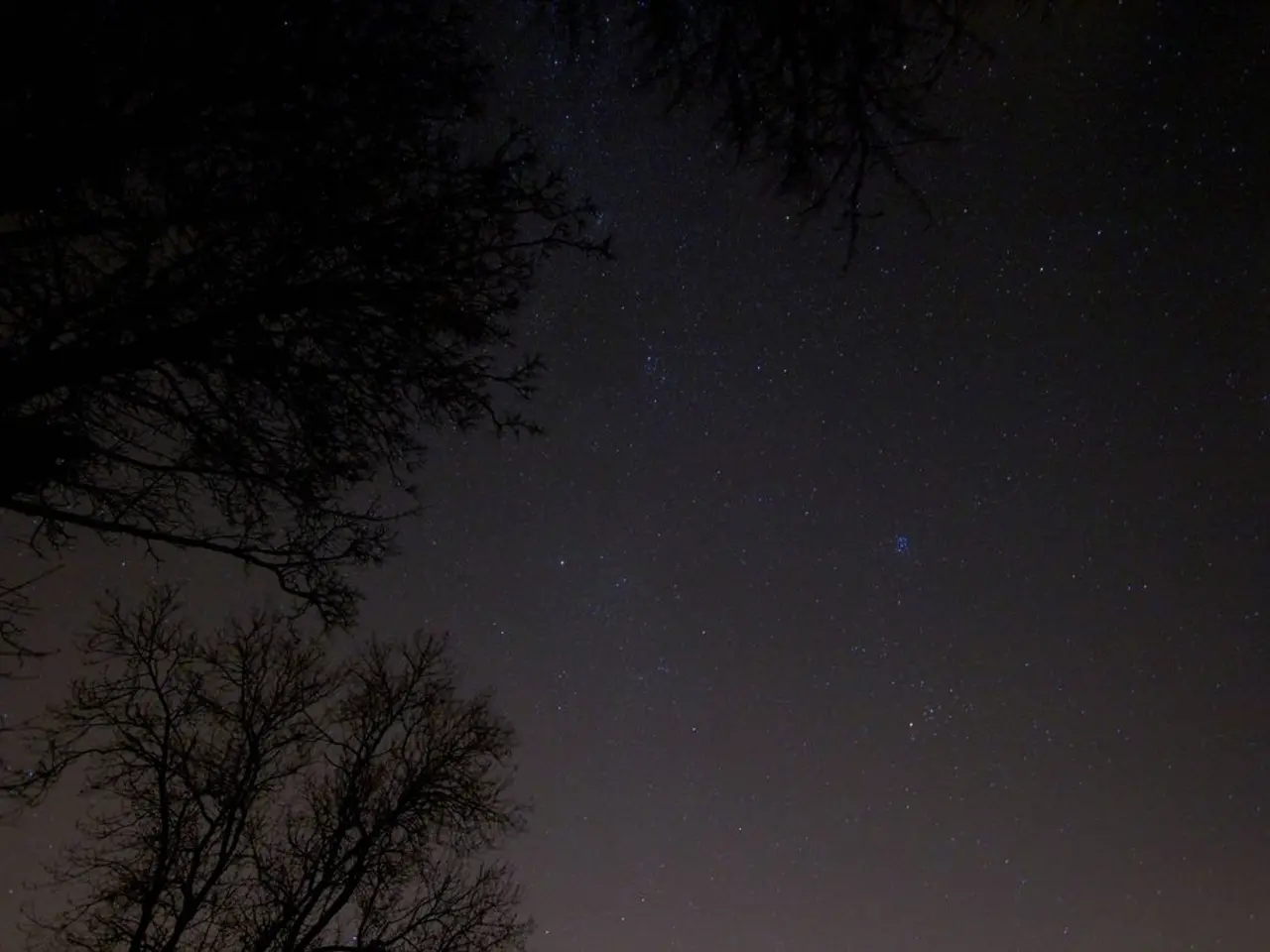Astronomical Highlights in the Night Sky with Binoculars: August through November 2025
Stargazing in the Northern Hemisphere: A Guide to Late Summer and Autumn 2025
Get ready for an unforgettable celestial journey as we guide you through the best stargazing opportunities in the Northern Hemisphere during late summer and autumn of 2025. With the right equipment and a bit of knowledge, you'll be able to witness some of the most spectacular sights the night sky has to offer.
The Essential Tool: Binoculars
For skywatchers in the Northern Hemisphere, binoculars with specifications around 7×50, 8×42, or 10×50 are typically the best choice. These offer a good balance between magnification, field of view, brightness, and ease of use for celestial observing. Binoculars with 10×50 and 15×70 sizes are particularly recommended for viewing deep-sky objects like nebulae and star clusters, with 10×50 being highlighted for brighter deep-sky targets such as the Dumbbell Nebula.
August 2025
August is a month filled with wonders. One of the highlights is the Dumbbell Nebula (M27), visible with 10×50 or 15×70 binoculars. This bright planetary nebula is a must-see.
Another spectacular sight is the Milky Way, streaming towards the southern horizon through the Summer Triangle during the Northern Hemisphere's summer. Binoculars enhance the view of starfields and embedded nebulae.
Planetary Alignments and Conjunctions
A notable event on August 12 is the close conjunction of Venus and Jupiter before dawn, where binoculars reveal Jupiter’s four Galilean moons.
Star Clusters and Nebulae in Sagittarius Region
The large Sagittarius star cloud, Lagoon Nebula (M8), and Trifid Nebula (M20) are excellent targets, best seen with binoculars under dark skies roughly 7:30–8:30 pm towards the end of August.
September and October 2025
The Andromeda Galaxy (M31)
In autumn evenings, the Andromeda Galaxy becomes prominently visible and is accessible with binoculars such as 8×42 or 10×50. You'll be able to see this distant galaxy as one of the farthest naked-eye objects.
Open Star Clusters
Fall is excellent for observing various open star clusters like the Pleiades (M45) and the Hyades.
Planetary Highlights
Saturn and Mars will also be visible to binoculars during this period, along with rich star fields in constellations like Cassiopeia and Perseus.
Meteor Showers
Meteor showers such as the Draconids in October can be enhanced in visibility with binoculars focusing on the radiant area.
Other Constellations to Explore
The Coathanger, also known as Brocchi's Cluster, is a small but obvious pattern of 10 stars that can be seen with binoculars. Sagitta, "The Arrow," is a small constellation that is a must-see for binocular observers, found close to the constellation Aquila and can be located by looking slightly above the bright star Altair in the Summer Triangle. The Dolphin (Delphinus) is a small asterism that can be observed between Altair in Aquila and the Great Square of Pegasus.
Sign Up for a Daily Newsletter
To stay updated on the world's most fascinating discoveries, sign up for a daily newsletter. These discoveries will be delivered straight to your inbox.
A Remarkable Event in 2025
A planetary conjunction between Venus and Jupiter will occur on Aug. 12, 2025, with the two planets appearing less than a degree apart.
For the best experience, use a star app or astronomy guide to locate targets and observe from a dark site away from light pollution. Rich starfields and nebula can be seen by dragging binoculars across the Summer Triangle, particularly between Deneb and Altair.
Happy stargazing!
- To catch a glimpse of the breathtaking Dumbbell Nebula (M27) during the month of August 2025, consider using binoculars with magnifications ranging from 10×50 to 15×70 for optimal viewing.
- In the Northern Hemisphere's autumn season of September and October 2025, the Andromeda Galaxy (M31) can be observed with binoculars such as 8×42 or 10×50, making it one of the farthest naked-eye objects accessible to skywatchers.
- To enhance your viewing experience of meteor showers like the Draconids in October 2025, use binoculars to focus on the radiant area for an improved display of these celestial wonders.




